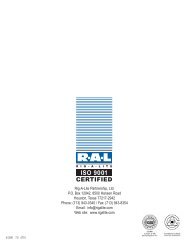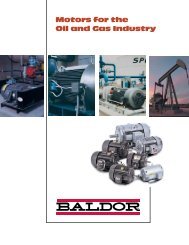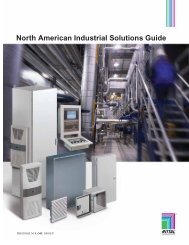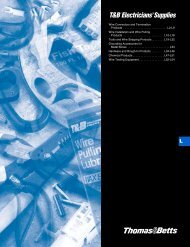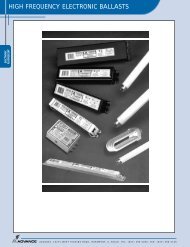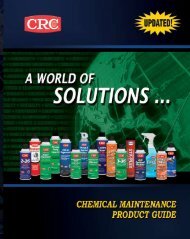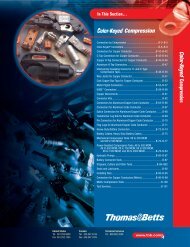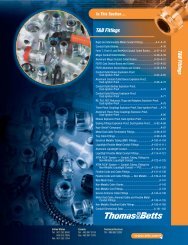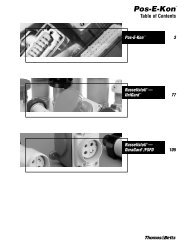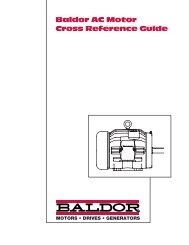- Page 2: GENERALINFORMATIONTable of Contents
- Page 6: GENERALINFORMATIONGeneral Informati
- Page 9: GENERALINFORMATIONGeneral Informati
- Page 13 and 14: DIAMONDSHIELDSERIESThe DiamondShiel
- Page 15 and 16: DIAMONDSHIELDSERIESDiamondShield S
- Page 17 and 18: DIAMONDSHIELDSERIESWTechnical Speci
- Page 19 and 20: DIAMONDSHIELDSERIESHWTechnical Spec
- Page 21 and 22: DIAMONDSHIELDSERIESTechnical Specif
- Page 23 and 24: DIAMONDSHIELDSERIESTechnical Specif
- Page 25 and 26: DIAMONDSHIELDSERIESTechnical Specif
- Page 27 and 28: DIAMONDSHIELDSERIESDiamondShield S
- Page 29 and 30: DIAMONDSHIELDSERIESWTechnical Speci
- Page 31 and 32: DIAMONDSHIELDSERIESHWTechnical Spec
- Page 33 and 34: DIAMONDSHIELDSERIESTechnical Specif
- Page 35 and 36: DIAMONDSHIELDSERIESTechnical Specif
- Page 37 and 38: DIAMONDSHIELDSERIESTechnical Specif
- Page 39 and 40: DIAMONDSHIELDSERIESDiamondShield S
- Page 41 and 42: DIAMONDSHIELDSERIESWTechnical Speci
- Page 43 and 44: DIAMONDSHIELDSERIESHWTechnical Spec
- Page 45 and 46: DIAMONDSHIELDSERIESTechnical Specif
- Page 47 and 48: DIAMONDSHIELDSERIESTechnical Specif
- Page 49 and 50: DIAMONDSHIELDSERIESTechnical Specif
- Page 51 and 52: DIAMONDSHIELDSERIESThe Design Diffe
- Page 53 and 54: DIAMONDSHIELDSERIESThe Design Diffe
- Page 55 and 56: DIAMONDSHIELDSERIESStahlin Non-Meta
- Page 57 and 58: DIAMONDSHIELDSERIESDiamondShield Pa
- Page 59 and 60: DIAMONDSHIELDSERIESDiamondShield Pa
- Page 61 and 62:
CLASSIC SERIESThe Classic SeriesThe
- Page 63 and 64:
CLASSIC SERIESClassic Series enclos
- Page 65 and 66:
Classic Series ConfigurationsCLASSI
- Page 67 and 68:
CLASSIC SERIESWTechnical Specificat
- Page 69 and 70:
CLASSIC SERIESHWTechnical Specifica
- Page 71 and 72:
CLASSIC SERIESHLTechnical Specifica
- Page 73 and 74:
CLASSIC SERIESTechnical Specificati
- Page 75 and 76:
CLASSIC SERIESTechnical Specificati
- Page 77 and 78:
CLASSIC SERIESTechnical Specificati
- Page 79 and 80:
CLASSIC SERIESTechnical Specificati
- Page 81 and 82:
CLASSIC SERIESTechnical Specificati
- Page 83 and 84:
CLASSIC SERIESTechnical Specificati
- Page 85 and 86:
2006 p83-106 CLW 8/13/06 2:45 PM Pa
- Page 87 and 88:
2006 p83-106 CLW 8/13/06 2:46 PM Pa
- Page 89 and 90:
2006 p83-106 CLW 8/13/06 2:46 PM Pa
- Page 91 and 92:
2006 p83-106 CLW 8/13/06 2:46 PM Pa
- Page 93 and 94:
2006 p83-106 CLW 8/13/06 2:46 PM Pa
- Page 95 and 96:
2006 p83-106 CLW 8/13/06 2:46 PM Pa
- Page 97 and 98:
2006 p83-106 CLW 8/13/06 2:46 PM Pa
- Page 99 and 100:
2006 p83-106 CLW 8/13/06 2:46 PM Pa
- Page 101 and 102:
2006 p83-106 CLW 8/13/06 2:46 PM Pa
- Page 103 and 104:
2006 p83-106 CLW 8/13/06 2:46 PM Pa
- Page 105 and 106:
2006 p83-106 CLW 8/13/06 2:46 PM Pa
- Page 107 and 108:
2006 p83-106 CLW 8/13/06 2:47 PM Pa
- Page 109 and 110:
The “J” SeriesJJ SERIESThe “J
- Page 111 and 112:
The “J” SeriesJJ SERIESThe “J
- Page 113 and 114:
“J” Series ConfigurationsHPLHin
- Page 115 and 116:
WTechnical Specifications - “J”
- Page 117 and 118:
HWTechnical Specifications - “J
- Page 119 and 120:
Technical Specifications - “J”
- Page 121 and 122:
Technical Specifications - “J”
- Page 123 and 124:
Technical Specifications - “J”
- Page 125 and 126:
Technical Specifications - “J”
- Page 127 and 128:
Technical Specifications - “J”
- Page 129 and 130:
The “JW” Series JWJW SERIESThe
- Page 131 and 132:
The “JW” SeriesJWJW SERIESThe
- Page 133 and 134:
“JW” Series ConfigurationsHPLHi
- Page 135 and 136:
WTechnical Specifications - “JW
- Page 137 and 138:
HWTechnical Specifications - “JW
- Page 139 and 140:
Technical Specifications - “JW”
- Page 141 and 142:
Technical Specifications - “JW”
- Page 143 and 144:
Technical Specifications - “JW”
- Page 145 and 146:
Technical Specifications - “JW”
- Page 147 and 148:
Technical Specifications - “JW”
- Page 149 and 150:
The “JCC” Series JCCJCC SERIEST
- Page 151 and 152:
The “JCC” SeriesJCC“JCC” Se
- Page 153 and 154:
“JCC” Series ConfigurationsHPLH
- Page 155 and 156:
WTechnical Specifications - “JCC
- Page 157 and 158:
HWTechnical Specifications - “JCC
- Page 159 and 160:
Technical Specifications - “JCC
- Page 161 and 162:
Technical Specifications - “JCC
- Page 163 and 164:
Technical Specifications - “JCC
- Page 165 and 166:
Technical Specifications - “JCC
- Page 167 and 168:
Technical Specifications - “JCC
- Page 169 and 170:
The “RJ” Series RJRJ SERIESThe
- Page 171 and 172:
The “RJ” SeriesRJRJ SERIESThe
- Page 173 and 174:
“RJ” Series ConfigurationsHPLHi
- Page 175 and 176:
WTechnical Specifications - “RJ
- Page 177 and 178:
HWTechnical Specifications - “RJ
- Page 179 and 180:
Technical Specifications - “RJ”
- Page 181 and 182:
Technical Specifications - “RJ”
- Page 183 and 184:
Technical Specifications - “RJ”
- Page 185 and 186:
Technical Specifications - “RJ”
- Page 187 and 188:
Technical Specifications - “RJ”
- Page 189 and 190:
The “RJW” Series RJWThe “RJW
- Page 191 and 192:
The “RJW” SeriesRJWRJW SERIESTh
- Page 193 and 194:
“RJW” Series ConfigurationsHPLH
- Page 195 and 196:
WTechnical Specifications - “RJW
- Page 197 and 198:
HWTechnical Specifications - “RJW
- Page 199 and 200:
Technical Specifications - “RJW
- Page 201 and 202:
Technical Specifications - “RJW
- Page 203 and 204:
Technical Specifications - “RJW
- Page 205 and 206:
Technical Specifications - “RJW
- Page 207 and 208:
Technical Specifications - “RJW
- Page 209 and 210:
The “Fatboy” SeriesSSHFATBOY SE
- Page 211 and 212:
The “Fatboy” SeriesSSHFATBOY SE
- Page 213 and 214:
The “TeleControl” SeriesHPLTC
- Page 215 and 216:
The DuraBoxx SeriesDThe DuraBoxx Se
- Page 217 and 218:
The “D” SeriesDDuraBoxxStahlin
- Page 219 and 220:
“D” Series “W” Configuratio
- Page 221 and 222:
The “DL” SeriesDLDuraBoxxStahli
- Page 223 and 224:
“DL” Series “W” Configurati
- Page 225 and 226:
The “Small Junction” SeriesSMAL
- Page 227 and 228:
The “Small Junction” SeriesSMAL
- Page 229 and 230:
Small JunctionCFTechnical Specifica
- Page 231 and 232:
Small JunctionFTechnical Specificat
- Page 233 and 234:
“NewSentry © ” PVC EnclosuresP
- Page 235 and 236:
NewSentry ®SeriesPVCNEWSENTRYSERIE
- Page 237 and 238:
Technical Specifications - NewSentr
- Page 239 and 240:
The “Pushbutton” SeriesPUSHBUTT
- Page 241 and 242:
The “Pushbutton” SeriesPUSHBUTT
- Page 243 and 244:
Push ButtonCFTechnical Specificatio
- Page 245 and 246:
Push ButtonCFTechnical Specificatio
- Page 247 and 248:
Push ButtonFTechnical Specification
- Page 249 and 250:
Control EnclosuresControl Enclosure
- Page 251 and 252:
Control Enclosures Type 4XNLarge co
- Page 253 and 254:
WTTechnical Specifications - Contro
- Page 255 and 256:
Control Enclosures Type 4X “WT”
- Page 257 and 258:
Technical Specifications - Control
- Page 259 and 260:
Control Enclosures Type 4X “HWT
- Page 261 and 262:
“FHLWT” configuration - Fibergl
- Page 263 and 264:
Control Enclosures Type 4X “FHLWT
- Page 265 and 266:
Control Enclosures Type 12NCONTROLE
- Page 267 and 268:
Technical Specifications - Control
- Page 269 and 270:
Control Enclosures Type 12 Technica
- Page 271 and 272:
Control Enclosures Type 3RNControl
- Page 273 and 274:
RTTechnical Specifications - Contro
- Page 275 and 276:
Control Enclosures Type 3R “RT”
- Page 277 and 278:
Technical Specifications - Control
- Page 279 and 280:
Control Enclosures Type 3R “FHLRT
- Page 281 and 282:
Control Enclosures ControlTower ©N
- Page 283 and 284:
N ControlTower © Single Door, Wall
- Page 285 and 286:
N ControlTower © Double Door, Free
- Page 287 and 288:
Control Enclosures - Dual AccessNDC
- Page 289 and 290:
NDTechnical Specifications - Contro
- Page 291 and 292:
Control Disconnect EnclosuresCCONTR
- Page 293 and 294:
“Control Disconnect Enclosures”
- Page 295 and 296:
Control DisconnectCTechnical Specif
- Page 297 and 298:
Control DisconnectCTechnical Specif
- Page 299 and 300:
Control DisconnectCTechnical Specif
- Page 301 and 302:
Control DisconnectCTechnical Specif
- Page 303 and 304:
“Control Circuit Breaker Enclosur
- Page 305 and 306:
Circuit Breaker Enclosures Technica
- Page 307 and 308:
Circuit Breaker Enclosures Technica
- Page 309 and 310:
Combination Starter Enclosures Tech
- Page 311 and 312:
Trough, Wireway & StrutTrough, Wire
- Page 313 and 314:
Fiberglass WirewayWWWWFiberglass Wi
- Page 315 and 316:
Fiberglass Trough & StrutFTFTFiberg
- Page 317 and 318:
ModRight ModificationsModRight Ser
- Page 319 and 320:
ModRight Enclosure Modification Ca
- Page 321 and 322:
The “Gasketed Window”J, RJ, NTh
- Page 323 and 324:
N Series Gasketed WindowModRightGas
- Page 325 and 326:
General AccessoriesStahlin Enclosur
- Page 327 and 328:
General AccessoriesLouver Plate Ven
- Page 329 and 330:
General AccessoriesCord Grips HubsC
- Page 331 and 332:
Enclosure Specific Accessories - Cl
- Page 333 and 334:
Enclosure Specific Accessories - Co
- Page 335 and 336:
Enclosure Specific Accessories - Co
- Page 337 and 338:
Enclosure Specific Accessories - Fi
- Page 339 and 340:
Enclosure Specific Accessories - Mo
- Page 341 and 342:
An environmentally sealed enclosure
- Page 343 and 344:
Technical InformationEnclosure Sele
- Page 345 and 346:
Technical InformationEnclosure Sele
- Page 347 and 348:
Technical InformationEnclosure Mate
- Page 349 and 350:
Technical InformationChemical Resis
- Page 351 and 352:
Technical InformationChemical Resis
- Page 353 and 354:
Technical InformationChemical Resis
- Page 355 and 356:
Technical InformationChemical Resis
- Page 357 and 358:
Technical InformationNon-Metallic P
- Page 359 and 360:
OverviewTechnical InformationEnclos
- Page 361 and 362:
Technical InformationEnclosure Temp
- Page 363 and 364:
Technical InformationEnclosure Temp
- Page 365 and 366:
Technical InformationEnclosure Temp
- Page 367 and 368:
Technical InformationEnclosure EMI/
- Page 369 and 370:
Technical InformationEnclosure Inst
- Page 371 and 372:
Technical InformationEnclosure Inst
- Page 373 and 374:
Installation ConsiderationsCutting
- Page 375 and 376:
TechnicalInformationA non-haloginat
- Page 377 and 378:
A unique SMC system for maximizing
- Page 379 and 380:
GlossaryIndustry Acronyms and Enclo
- Page 381 and 382:
GlossaryIndustry Acronyms and Enclo
- Page 383 and 384:
GlossaryIndustry Acronyms and Enclo
- Page 385 and 386:
Catalog Part Number IndexIndexPrefi
- Page 387 and 388:
Notes385Stahlin Enclosures • 500
- Page 389:
Notes387Stahlin Enclosures • 500



